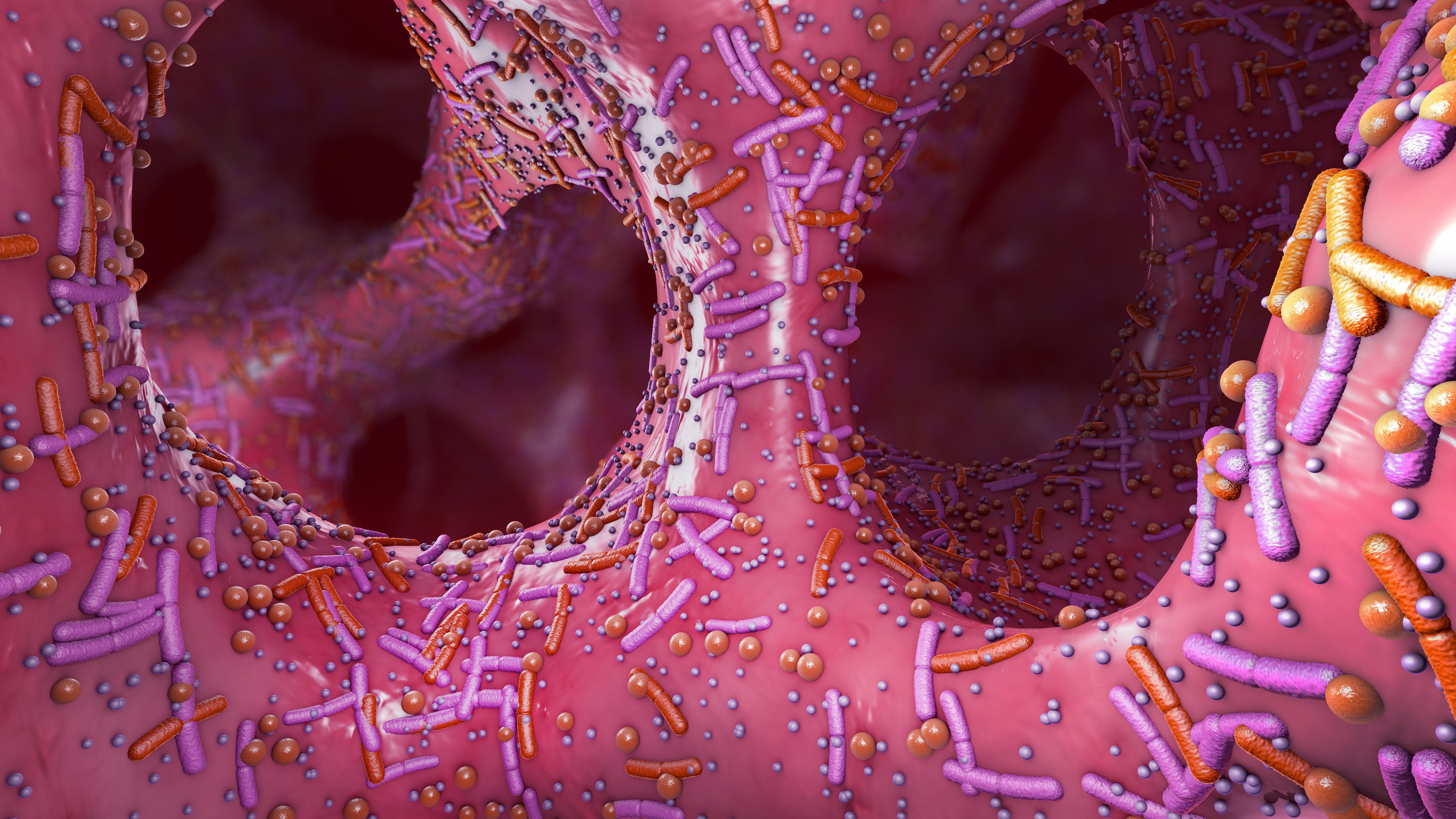

There are something like 20 trillion bacterial cells of 75 to 100 different species living in the colon of an adult, he says.
‘‘We can recognise the kinds of bacteria that live there, but there is some individuality so not every adult’s gut microbiota is the same. However, the [microbial] community is doing the same thing in everybody.’’
This metabolic redundancy, confers functional resilience. If by some catastrophe you lost one or two species, there would be others that could pick up the same function, he says.
The microbiota in the colon process food components the stomach and small intestine can’t digest.
‘‘Dietary fibre passes down to the colon and becomes the food for the microbes. It’s a pretty cunning system. We don’t have the enzymes to break dietary fibre down but the bacteria do, so they ferment the breakdown products to short-chain fatty acids. We can use those in various ways. In evolutionary terms the gut microbiota is all about helping us extract the maximum amount of energy from our food.’’
Fibre is important not just microbiologically but also in regulating the rate that food passes through the gut. Low-fibre people get constipated, he said.
There is good evidence that what we eat influences which organisms are present in the gut, he says, but warns that claims that the microbiota affects just about everything must be taken with a grain — or a bag — of salt.
‘‘What we should emphasise is that some people have published work that says there are associations between particular conditions like obesity and the composition of the gut microbiota, but the actual cause is not demonstrated. It’s a statistical correlation, it’s an association.’’
However, this has fired up the scientific community to look at all sorts of diseases and see if the microbiome is different, he said
‘‘At the moment I think, yes, it’s very interesting and metabolically the microbial community in the gut is very important to us, but people are looking for changes in compositional activity, changes in relationship between the microbes and the human host — they call it dysbiosis. If there truly is a dysbiosis, can that be corrected, and by diet? Basically that is where the research is going.’’
Nevertheless, scientists still don’t know much about the mechanisms that regulate the highly interactive microbial community in the gut, he said.
‘‘My feeling is that until we understand how that community works, I don’t really see how we are going to correct dysbiosis. If you don’t know how the clock works you can’t fix it.’’
Although the different kinds of bacteria and their biochemistry is known, the jigsaw of microbial ecology needs to be put together — how particular species of bacteria live in particular habitats, what are their properties, many of them are interdependent — that’s the really fascinating part for the microbiologist, he said.
Another exciting aspect needing investigation is how microbial substances are integrated into human physiology, protecting us from pathogens by occupying all the niches in the ecosystem.
Our individual microbiota are acquired in the first year or two of life, initially from the mother and others the baby comes into contact with, and the food the baby is introduced to when it is weaned.
‘‘By the time a child is 12 months old they’ve got a collection of microbes that is very much like what is in an adult. This process of establishing the microbiota goes on for another year or two. That is a very important time to get kids eating a diversity of foods.’’
So what does Prof Tannock recommend for a healthy microbiota?
‘‘ ... a balanced diet, a diversity of grains, fruits, vegetables — the entire bounty of the earth, I think that’s the best advice you can give anybody,’’ he says.
‘‘All those things provide different substances that bacteria can use. The different species living in our gut can be grouped according to what kind of dietary fibre they can use. We are realising now that it’s very specific.
‘‘We think in ecology this is very important because the more diversity you have in the microbiota composition, the more stable the functioning of the microbiota is.’’












